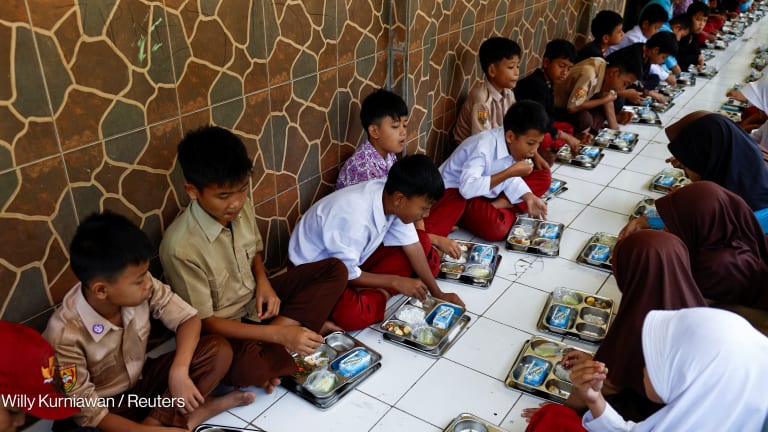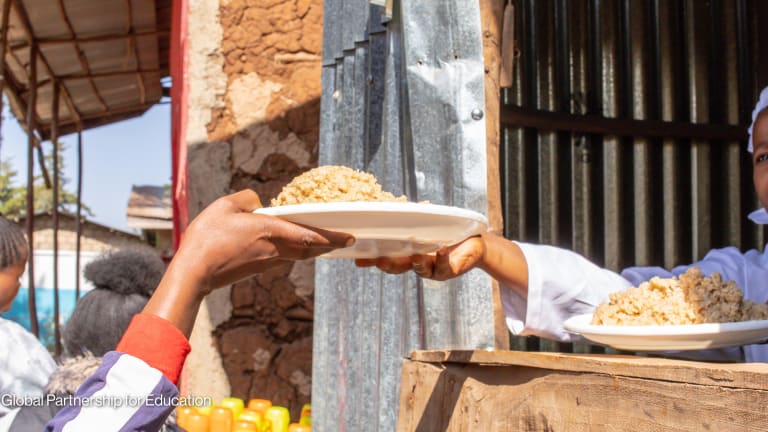
The COVID-19 pandemic has left nations reeling, not only from the continued public health emergency, but also as faltering economic conditions have led to increased food insecurity.
Every day, different regions of the world are highlighted as new coronavirus hotspots, while waves of infections sweep across the globe. With less than a decade remaining to achieve the Sustainable Development Goals, this crisis could not have come at a worse time.
As governments gather — virtually — to assess progress on the SDGs at the United Nations High-level Political Forum this July, the global development community must take note. We are behind on all commitments — and nowhere is this more evident than in our efforts to achieve SDG 2, Zero Hunger. While almost 690 million people faced hunger before the pandemic, by the time this op-ed is published, the Food and Agriculture Organization will have announced new data, but we are expecting this number to grow by over 100 million more individuals.
Though food banks deliver impact to their communities, many receive little to no government support. It’s time for this to change.
—But though there is rightly a significant cause of concern, the time for sounding alarm bells has passed. The time has come to act — and to do so effectively, we must stop defining the problem, and must shift to solving it. This will only be possible through partnerships. I believe the place to start is government engagement with local food banks.
Food banks fly under the radar when it comes to hunger alleviation
With little fuss or fanfare, food banks have been front-line responders to the growing hunger problem, from Africa to Asia to Latin America. Over the past year alone, as COVID-19 began spreading and economies were at a standstill, more than 40 million people across 44 countries accessed food banks supported by The Global FoodBanking Network, or GFN.
This represents a staggering 132% increase in the number of people served over the previous year. The increase was seen globally, with African food banks, many of which have operated for fewer than five years, reporting a 169% increase — the highest.
Fighting food waste to improve food security
Join The Global FoodBanking Network, WRAP, and the Harvard Law School Food Law and Policy Clinic to examine progress on SDG 2 and SDG 12.3 alongside the United Nations High-level Political Forum.
Register and tune in on July 14, 3 p.m. CET/9 a.m. ET.
While the numbers speak for themselves, food banks have many overlooked characteristics that make them important players for any effort to achieve SDG 2. For example, food banks are locally-led organizations. This means that they are deeply rooted in their communities and, thus, have a keen understanding of the challenges that surround them.
They are also incredibly efficient as they procure excess food and often deliver it to the most vulnerable and marginalized populations. Functionally, a food bank is not much different from a commercial food distributor, in fact, the main differentiator is that a food bank’s purpose is to benefit the community at large.
And finally, as efforts over the course of the pandemic have demonstrated, food banks are incredibly nimble and agile with access to existing supply chains that they can use to achieve their ultimate goal: to feed hungry people.
A partnership whose time has come
Part of our The Future of Food Systems series
Find out how we can make food fair and healthy for all. Join the conversation using the hashtag #FoodSystems and visit our The Future of Food Systems page for more coverage.
Though food banks deliver impact to their communities, many receive little to no government support. It’s time for this to change. To recover from the past year's devastation and resume SDG progress, greater collaboration between food banks and governments is crucial. Here are several ways this partnership could take shape.
First, at a basic level, governments can provide funding or food staples to local food bank networks. This would help these organizations ramp up services while coping with a significant drop in food and monetary donations due to rising unemployment and disruptions to local supply chains. Doing so will show immediate returns.
For example, throughout the pandemic, national and regional government agencies in Ecuador provided Banco de Alimentos Diakonía with meal and cleaning kits, and livestock such as chickens. According to Ecuadorian food banks’ latest internal data, much-needed items were delivered to more than 600,000 food baskets. If given the resources, networks can grow their capacity to reach more people quickly and efficiently.
Governments can also partner with food banks to ensure the populations they serve can enroll in food aid and unemployment programs. For example, because FoodForward SA has expertise reaching vulnerable populations, South Africa’s Western Cape Department of Health partnered with the food bank to provide food to individuals whom the government determined needed nutritional support amid the pandemic.
Food Systems Summit releases ideas for solutions, reform
The U.N. Food Systems Summit has released its list of ideas for food systems transformation curated from dozens of dialogues and submissions.
The food parcel project, which provides nonperishable grocery items, staple food products, and fresh produce to people in need, initially provided 170,000 meals and has since expanded nationwide. Similar partnerships with food banks can help governments keep up with the growing demand for assistance as economies continue to be impacted by the virus’ spread.
And finally, governments must begin addressing some of the policy barriers to food donation. In some countries, throwing away food is less expensive than donating it. In others, liability remains a concern. Removing these challenges has a noticeable impact. Argentina expanded its Food Donation Law to provide liability protection to food donors in 2018, which was one of the contributors to a 30% increase in food donations to Red de Bancos de Argentina.
Examples like this are highlighted by a joint research study by the Harvard Law School Food Law and Policy Clinic and GFN, which serves as a resource for policymakers. The study has found that with the right legislative framework, policymakers can help direct excess food to organizations that serve the hungry, putting that food to good use and keeping it from going to the landfill.
As government leaders gather to assess progress toward the SDGs during HLPF, the presummit, and then again in September at the U.N. Food Systems Summit, the growing hunger crisis and the need for immediate action will, undoubtedly, be on the agenda. My advice to all participants, especially member state representatives: Do not overlook food banks in these discussions. Food banks are your civil society partner. With increased engagement and more support, they can help eliminate hunger in their countries for good.
Visit the Future of Food Systems series for more coverage on food and nutrition — and importantly, how we can make food fair and healthy for all. You can join the conversation using the hashtag #FoodSystems.









